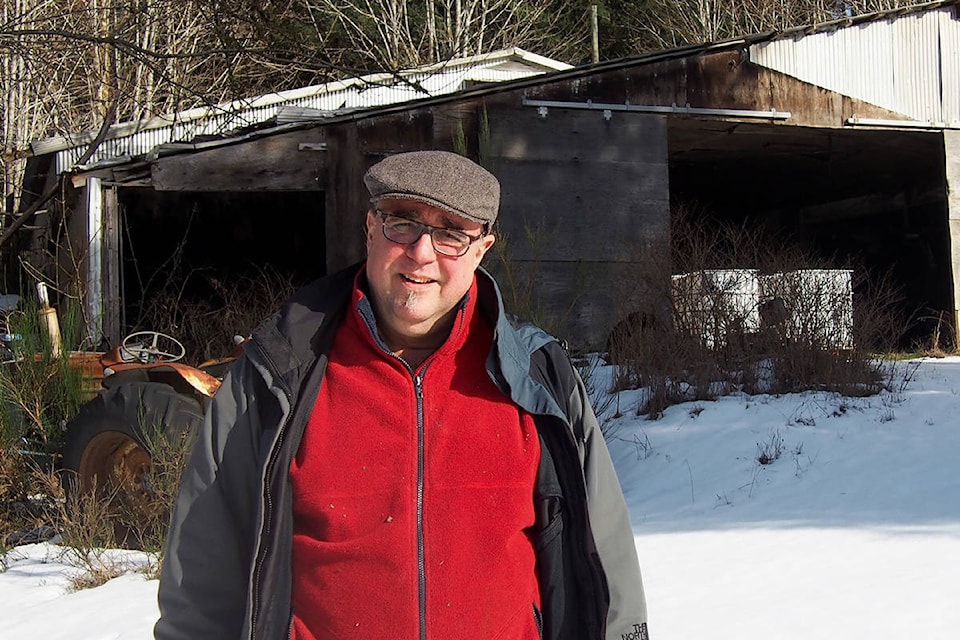BY MIKE YOUDS
Special to the News
While an old acreage off Franklin River Road remains buried under six inches of snow, Shelter Farm is about to bear fruit.
A market gardener training program, a partnership between Port Alberni Shelter Society and North Island College, will be turning what was a fallow field into a productive farm in the coming months. Instructor Guy Langlois has all but filled the class with local students, youths who may be green at farming but keen to join a new generation of farmers.
“Yes, they’re going to change the world,” said instructor Guy Langlois. “They’re going to change the community. We’re going to increase food production exponentially.”
The training program was established last year with a $94,600 grant from BC Rural Dividend, which assists rural communities of 25,000 or less. More than a dozen youths (age 15 to 29) have enrolled in the eight-month course, and will begin classroom training March 18.
“This is the first university college to offer this,” Langlois said.
Before the program could get off the ground, they needed to set up a farm to provide the hands-on experiential learning beyond classroom instruction. Craig Bowerman leased the 15-acre property, fallow since he bought it 15 years ago, for the nominal sum of $1 a year. A $110,000 test grant from the Vancouver Foundation has helped to bring the farm into operation.
“What they look for is projects that will bring change, system change initiatives,” Langlois said.
“The system we’re trying to change is agriculture. Youth are not engaging in food cultivation as they once did. Farmers, averaging in their late 50s in Canada, are aging out of the field, often with no one left to run the family farm.”
This greying of agriculture was identified as one of the biggest challenges in the ACRD’s agricultural plan, completed last year. The training is designed to identify and overcome barriers confronting young agrarians. While it’s open to everyone, youth participants can have their tuition fee covered.
Langlois will give a talk on the social enterprise and horticultural therapy at Alberni Valley Seedy Saturday on Saturday, March 16 at Char’s Landing.
“We’re looking at small-scale farming. B.C. has a lot, but market gardening is a different way of looking at crop growing using micro plots,” he said. “You’re maximizing yield over a smaller area.”
He cited the example of Jean-Martin Fortier, a Quebec farmer, educator and author who has inspired others to growing organic and biologically intensive cropping practices. Fortier earns $150,000 a year from 15 acres. Les Fortiers, a reality-based TV show, has popularized his example.
Langlois had no problem selling produce from the first season’s trial plots. Local restaurateurs were happy to snap up his fresh produce — tomatoes, turnips, carrots, radishes and greens. This year, his students will be selling the produce at local farmers markets. As future entrepreneurs, they could be eligible for low-interest start-up loans through the business development bank, providing the necessary means to start their own farms. They also have access to mentors through the program.
“The opportunity is fantastic,” Langlois said. “Everybody is excited about it. I know this is a huge opportunity for the community.”
He plans to document the program and develop online learning opportunities as well. Other campuses in Courtenay and on the west coast are watching the Port Alberni initiative unfold with an interest in starting their own market gardener training.
“We’re going to develop farmers here, but they’re going to be ambassadors as well.”
The acreage, an ancient peat bog that was tilled for generations, contains highly productive soil due to 65 percent organic matter.
“It’s the best soil in the valley,” Langlois said. “From our trials last year, everything grows phenomenally.”
